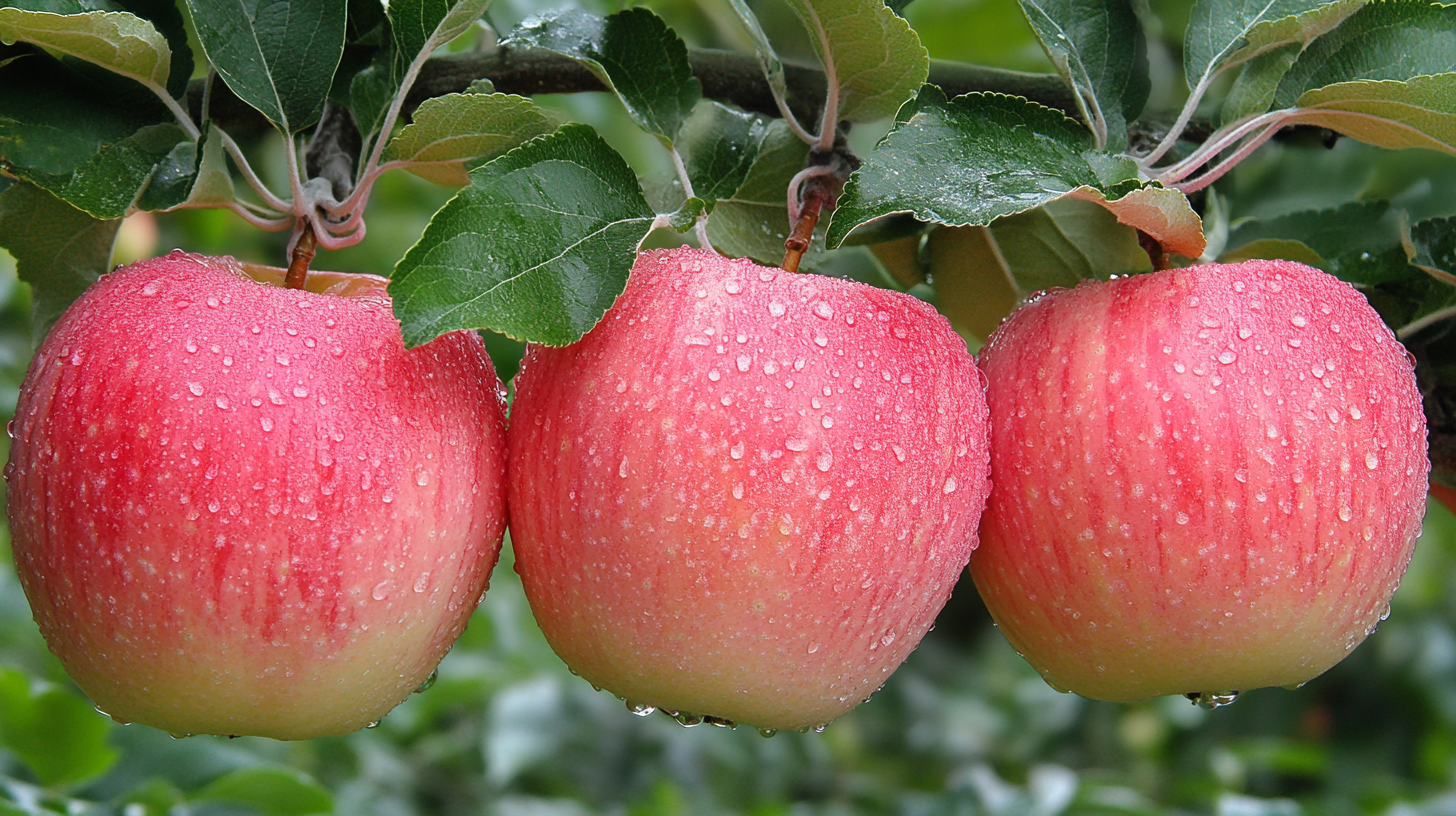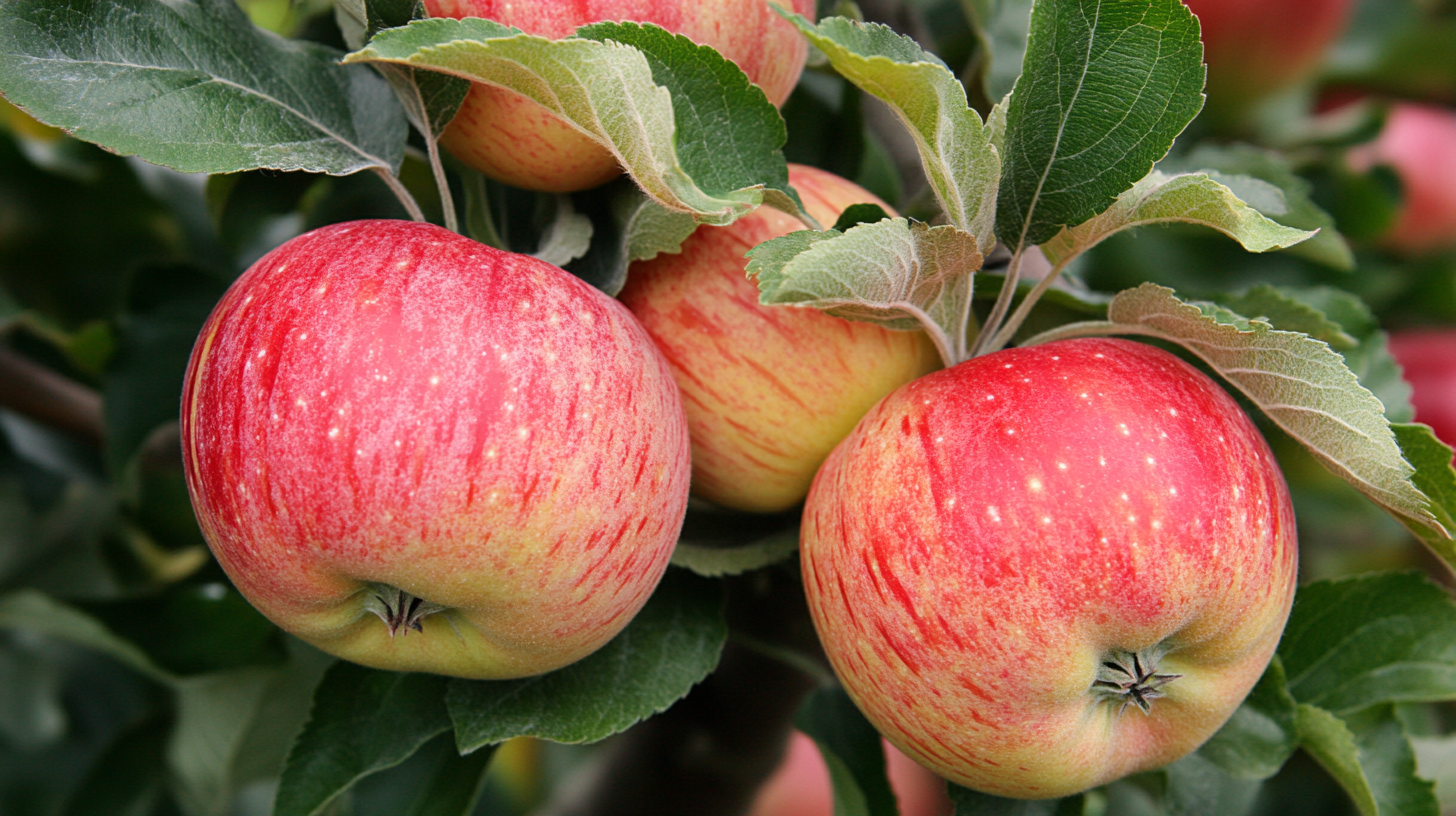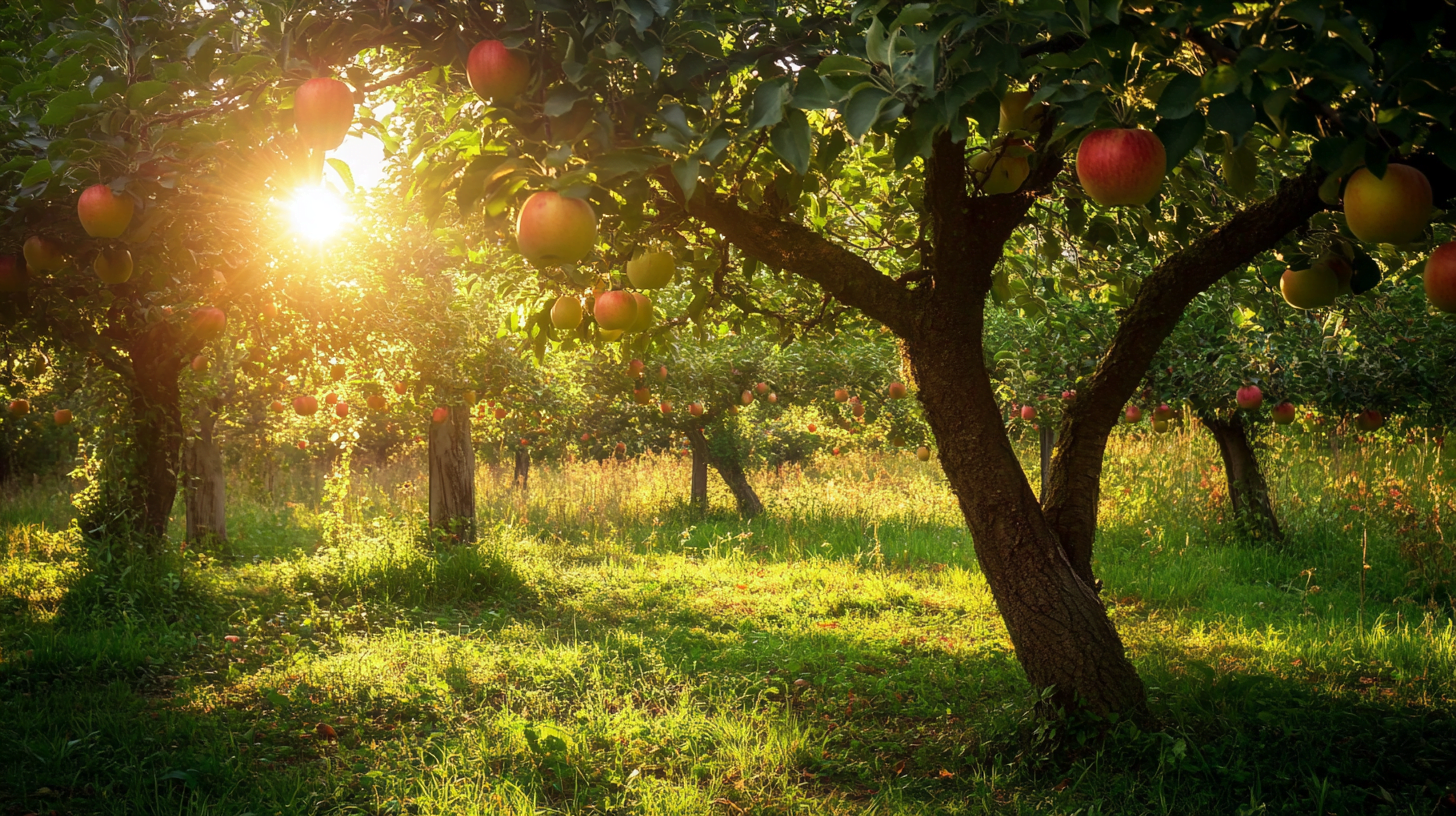Beautiful Plants For Your Interior

Table of Contents
Understanding Apple Tree Blossoms
The enchanting allure of apple tree blossoms captivates many, marking a quintessential sign of spring. Understanding the intricacies behind these blossoms leads to better care and appreciation of apple trees.
Timing of Apple Tree Bloom
Apple trees typically commence their annual bloom approximately 3-4 weeks following the initial visible growth of leaves in spring. The precise timing of this event is subject to annual variation, influenced by climatic fluctuations and the fulfillment of specific chilling and heat requirements necessary for the trees to break dormancy and begin growth.
According to data from Extension.org, apple trees need to satisfy chilling requirements, which range between 800 to 1200 hours of cold exposure (at temperatures of 40-45°F), and they must accumulate roughly 300 growing degree-hours, which are hours of temperatures above 40°F, to trigger blossoming in spring.
The table below illustrates the variability in bloom dates within a single location and between regions due to temperature variations:
| Region | Typical Bloom Time |
|---|---|
| Southern/Warmer Climates (e.g., Western North Carolina) | Mid-April |
| Northern/Colder Climates (e.g., Minnesota) | Mid-May |
Influence of Winter and Spring Temperatures
Winter and spring temperatures not only influence the timing of apple tree blooms but also affect their health and vitality. Cold temperatures can inflict damage on fruit trees at various stages: before dormancy in fall, during winter dormancy, and during the early growth and flowering in spring. Instances of hail can also cause both cosmetic and physical harm to the trees.
To mitigate the adverse effects of temperature extremes, proper site selection is paramount, ideally on gently sloping lands that ensure good air drainage. Planting wind-breaks can be beneficial in reducing wind damage to fruit trees, as suggested by WSU Tree Fruit.
For those interested in discovering varieties that may suit their regional climate conditions, refer to apple tree varieties. Additionally, understanding appropriate care methods such as pruning apple trees and learning how to plant apple trees contribute to the health and success of apple tree blossoms. For space-constrained gardeners, exploring dwarf apple trees may offer a suitable alternative.
Factors Affecting Apple Tree Blossoms
The enchanting beauty of apple tree blossoms is not just a visual delight but also a critical phase in the life cycle of an apple tree. Several factors influence the blossoming of these trees, and understanding these can help ensure a healthy bloom and subsequently a fruitful harvest.
Chilling and Growing Degree-Hours Requirements
To break dormancy and promote healthy spring growth, apple trees have specific chilling and heat requirements. The “Chilling Requirement” refers to the number of hours during winter when temperatures are between 40-45°F. Apple trees typically need between 800 to 1200 chilling hours to overcome dormancy effectively. Once this requirement is met, the “Growing Degree-Hours” come into play, indicating the accumulated hours of temperatures above 40°F necessary for growth initiation in spring. The table below summarizes these requirements:
| Chilling Requirement (hours) | Growing Degree-Hours (after chilling) |
|---|---|
| 800 – 1200 | Approx. 300 |
These requirements vary annually and by location, impacting the timing of the bloom approximately 3-4 weeks after the first visible leaf growth (Extension.org).
Impact of Environmental Stress on Blossoms
Apple tree blossoms are sensitive to environmental stressors. Temperature extremes before dormancy in fall, during winter, and at the early stages of growth in spring can cause significant damage to apple trees. Hail may also bruise or scar the blossoms and developing fruit, affecting both the aesthetic and physical condition of the fruit (WSU Tree Fruit).
Drought is another environmental stressor that can influence apple tree health and cropping. Limited access to irrigation water may challenge the tree’s survival and subsequent blooming period. It is vital for growers to implement strategies to mitigate these stressors, such as mulching to retain soil moisture and using shade cloths to protect against extreme temperatures and hail.
Importance of Proper Site Selection
Choosing the right location to plant apple trees is crucial for minimizing temperature extremes and reducing the risk of bloom damage. An ideal site selection includes:
- Gently sloping land that provides good air drainage
- Sufficient sunlight exposure
- Protection from strong winds, possibly through the planting of wind-breaks
These factors contribute to a more stable microclimate around the apple tree, safeguarding blossoms from sudden temperature drops that can lead to frost damage. For more information on how to plant apple trees and ensure proper site selection, visit how to plant apple trees. Additionally, selecting apple tree varieties suited to your local climate can greatly influence the success of your orchard. Explore apple tree varieties for trees that best meet your chilling and growing degree-hours requirements.
By addressing these factors, gardeners and orchardists can enhance their chances of experiencing the full glory of apple tree blossoms each spring. Proper planning and attention to these details are key to cultivating a vibrant and productive apple orchard.
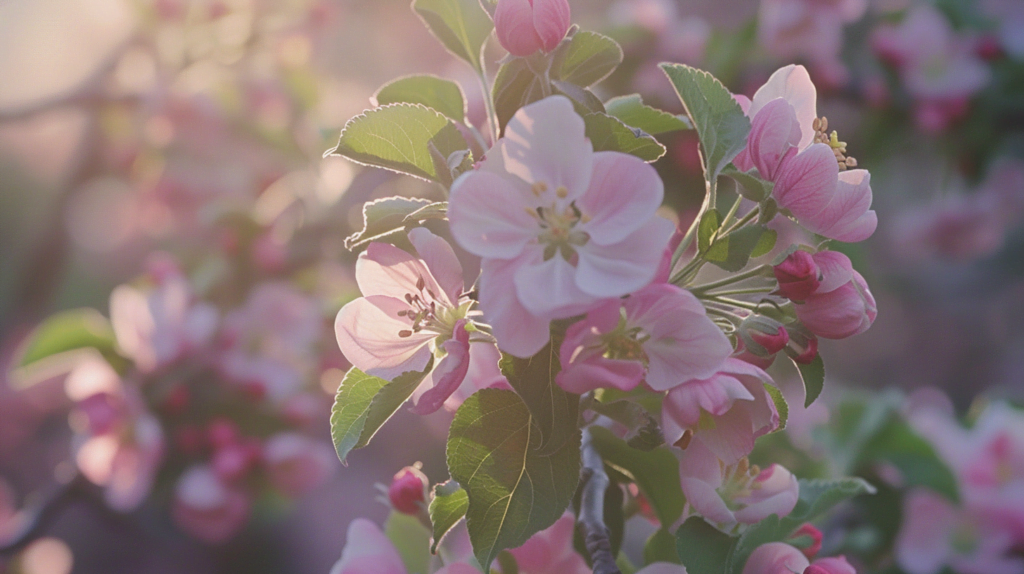
Issues with Apple Tree Blossoms
Apple tree blossoms, the delicate harbingers of spring and forthcoming fruit, are not without their own set of challenges. Understanding these issues is crucial for the health and productivity of the apple trees.
Common Diseases and Disorders
Apple tree blossoms can be affected by a number of diseases and disorders, which can impact the health and yield of the tree. Here are some of the most common ailments:
- Powdery Mildew: Identified by a white powdery growth on leaves, powdery mildew can reduce the tree’s vigor if the infection is severe.
- Apple Scab: This disease causes dark, scabby marks on the apple skin and leaves and can affect the quality of the fruit.
- Silver Leaf Disease: If you notice the leaves on one branch turning a silvery color, it may be due to silver leaf disease, which can lead to branch dieback (Royal Horticultural Society).
To manage these diseases, it’s important to ensure good air circulation through pruning apple trees and to select resistant apple tree varieties when possible. Additionally, fungicide applications may be necessary to control severe infections.
Management of Invertebrate Infestations
Invertebrate pests can also pose a threat to apple tree blossoms. Here are a few common invertebrates and their impact:
- Woolly Aphids: These pests infest blossoms and leaves, causing them to curl and become sticky with honeydew. Sooty molds can grow on this honeydew, further harming the tree.
- Apple Leaf-Mining Moth: The caterpillars of this moth create narrow, brown or white lines on the leaves, known as leaf mines. While these mines are usually not detrimental to the tree’s health and do not require control measures, they can be unsightly.
Management strategies for invertebrate infestations include monitoring for early signs of pests, promoting natural predator populations, and applying insecticides when necessary. For more information on how to maintain the health of your apple trees, consider reading about how to plant apple trees and the care of dwarf apple trees, which may have different susceptibility to pests and diseases.
Pollination of Apple Tree Blossoms
The magnificent display of apple tree blossoms is not just a feast for the eyes but also a critical phase in the lifecycle of apple trees. This section delves into the pivotal role of pollinators in the fruiting process and the requirements for cross-pollination to ensure a bountiful harvest.
Importance of Pollinators
Pollinators are the cornerstone of a successful apple harvest. Specifically, apple trees rely on honeybees, mason bees, and bumblebees as the main pollinators, which are captivated by the fragrance and hue of the flowers. When these bees forage the blossoms, pollen adheres to their bodies and is transported to subsequent flowers, facilitating pollination. Without these vital pollinators, apple tree blossoms would not develop into the fruits many enjoy.
Honey bees (Apis mellifera) are the most crucial and commonly utilized pollinators for apple trees. They are often managed by orchardists to ensure a consistent presence during the bloom period. Mason bees, known for their solitary nature, can also be encouraged to nest near apple orchards using special nesting materials, and their contribution to pollination is significant, especially in smaller or backyard orchards.
Cross-Pollination Requirements
Cross-pollination is a must for apple trees to bear fruit, necessitating pollen from flowers of a different apple tree variety. A lone apple tree may produce insufficient fruit without a corresponding pollinator partner and the presence of bees. To maximize pollination, apple trees should be planted within a 100-foot radius of each other, ensuring that pollinators have access to different varieties for effective pollination (Swansons Nursery).
| Variety | Compatible Pollination Partner |
|---|---|
| Honeycrisp | Fuji, Gala, Golden Delicious |
| Fuji | Honeycrisp, Granny Smith, McIntosh |
| Gala | Honeycrisp, Fuji, Red Delicious |
| Golden Delicious | Honeycrisp, Gala, Fuji |
Properly pruning apple trees and choosing the right variety, including dwarf apple trees for smaller spaces, can also influence the effectiveness of pollination. Learning how to plant apple trees with consideration for pollination requirements can significantly impact the yield and quality of the fruit produced.
In conclusion, understanding the role of pollinators and the necessity for cross-pollination is essential for anyone looking to grow apple trees. With the right pollinator partners and mindful cultivation practices, gardeners and orchardists can unlock the magic of apple tree blossoms and enjoy the fruits of their labor.
Bloom Periods and Compatibility
The bloom period of apple trees is a critical time for ensuring the future harvest. During this time, the compatibility between varieties and their resistance to late frosts can significantly impact the success of pollination and fruit set.
Apple Varieties and Bloom Groups
Apple tree varieties are sorted into bloom groups based on their flowering times during the spring. These groups are designated as early, early-mid, mid, mid-late, and late. This classification helps orchard owners and home gardeners determine which varieties will bloom concurrently, thus aiding in cross-pollination. The apple bloom period typically spans about three weeks in spring, with each specific variety blooming for roughly one week within this period (Cummins Nursery).
| Bloom Group | Example Varieties |
|---|---|
| Early | ‘Idared’, ‘Alkmene’ |
| Early-Mid | ‘Empire’, ‘Discovery’ |
| Mid | ‘Golden Delicious’, ‘McIntosh’ |
| Mid-Late | ‘Braeburn’, ‘Fujii’ |
| Late | ‘Granny Smith’, ‘Pink Lady’ |
Visit our apple tree varieties section for more information on specific types and their bloom groups.
Preventing Blossom Damage from Late Frosts
Late frosts can pose a significant threat to apple tree blossoms, potentially leading to a complete loss of the crop. To mitigate this risk, it is advised to select apple varieties with later bloom times if the area is known to experience late frosts. This strategy can help ensure that the blossoms are not exposed to damaging cold temperatures (Cummins Nursery).
Furthermore, integrating a mid-season blooming tree into the orchard can offer a form of insurance for pollination, as these trees can usually pollinate both early and late blooming apple varieties (Cummins Nursery). Here are some additional measures to consider for protecting blossoms from late frosts:
- Employ frost-protection strategies such as frost cloths or wind machines.
- Consider the microclimate of your planting location; lower areas of land can be more prone to frost.
- Practice pruning apple trees to encourage strong growth and potentially delay blooming.
- Explore the option of dwarf apple trees, which can be easier to protect due to their smaller size.
For more detailed guidance on orchard management and setting up for a successful bloom period, see our section on how to plant apple trees.
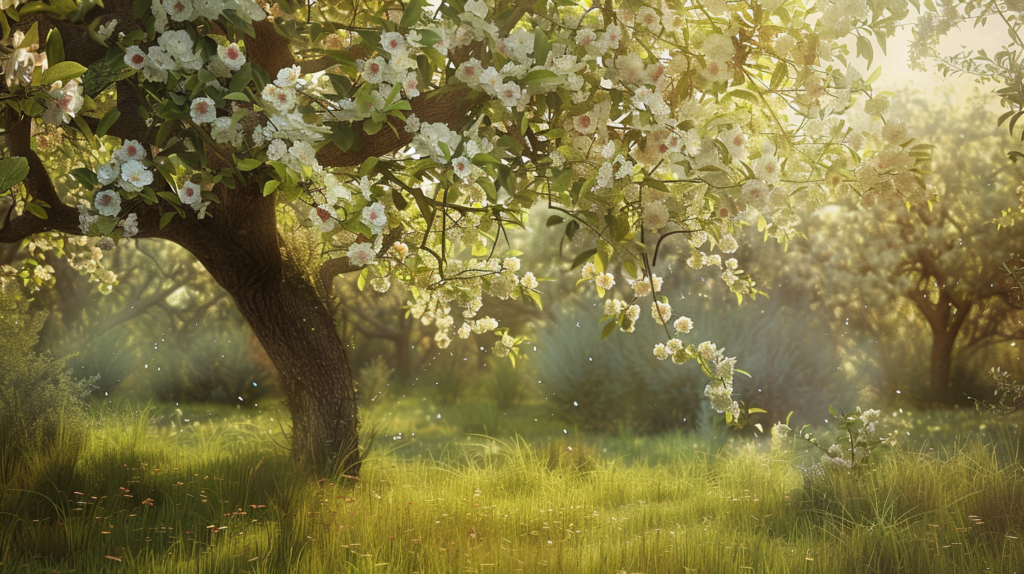
Environmental Factors for Blossom Health
The vitality and prosperity of apple tree blossoms are closely tied to several environmental conditions. Light, temperature, water, and relative humidity each play an integral role in the health and development of these blossoms.
Light, Temperature, and Water
Apple tree blossoms thrive under certain light, temperature, and water conditions. Light quantity, quality, and duration are essential, with more sunlight correlating to a higher capacity for photosynthesis. Particularly, blue and red light spectrums are crucial, influencing vegetative growth and flowering respectively.
Temperature is another pivotal factor that influences key plant processes. While higher temperatures can boost photosynthesis, transpiration, and respiration, lower temperatures may hinder these processes. Each plant species, including apple trees, has specific temperature needs for germination and flowering (OSU Extension Service).
Water is the lifeblood of plants, comprising about 90% of their composition. It is vital for nutrient absorption and effective transpiration. Ensuring apple trees receive adequate irrigation is crucial for the blossoms to develop properly. For guidance on watering practices, see how to plant apple trees.
Effects of Relative Humidity
Relative humidity, the measure of water vapor in the air, can significantly affect blossom health by influencing the tree’s transpiration rate. Transpiration typically spikes on hot, dry, and windy days. However, if relative humidity is too high, it can lead to diminished transpiration, potentially causing water to accumulate within the plant and increasing susceptibility to diseases.
Managing relative humidity is thus vital for maintaining the health of apple tree blossoms. It’s important to note that proper pruning can enhance air circulation around the tree’s canopy, reducing humidity-related issues.
Understanding and managing these environmental factors are key to ensuring the health of apple tree blossoms. While some factors like temperature and humidity may be beyond direct control, practices such as proper watering, site selection, and tree care can mitigate potential risks. For those with space constraints, dwarf apple trees might offer a suitable alternative, as they can be easier to manage in terms of light and water needs.
